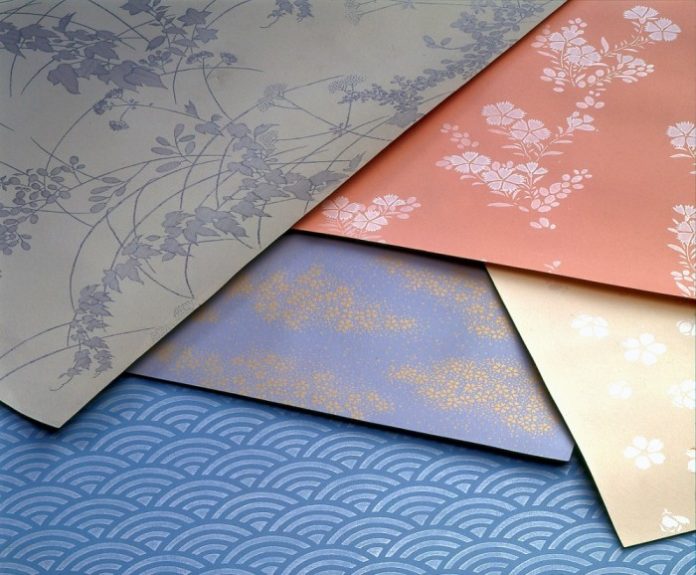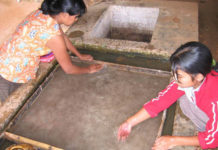The word “karakami” originally referred to a type of craft paper that originated in the Tang Dynasty of ancient China. The Japanese origin of these decorative papers dates back to a type of paper used during the Heian period (794-1185) to write out the traditional style of poem called a waka. Nevertheless, it was not until the Middle Ages that decorative papers were applied to free-standing screens and were stretched over the sliding screens called fusuma dividing interior space.
With the community development and building which was promoted by the Shogunate during the Edo period (1600-1868), the demand for these papers increased and a number of successful and original developments were made. The extent to which this craft had developed can be gauged by the depiction of specialists at work making Edo Karakami in illustrations from a late seventeenth-century book on various Japanese crafts.
These decorative papers comprise a range of papers that are either printed using wooden blocks, stencilled, or decorated with gold and silver leaf. They are still used on screens, fusuma and on shoji screens, which are usually translucent. With patterns expressive of an unfettered magnanimity and freedom reflecting the merchant culture of Edo, there is a generous use of seasonal motifs from nature and the everyday paraphernalia of life. Apart from traditional uses, these charmingly decorated papers can be applied to walls and ceilings, too, and can enhance a modern interior as interestingly as a traditional one.
Karakami refers to decorated washi paper used for sliding doors, the paper screens within doors, and folding decorative screens. Edo Karakami reflects the culture of the Edo townspeople in the popularity of free, frank and easy-going designs. Well-loved motifs include those showing the intimate details of daily life, flowers, and scenes rich with seasonal beauty.
In addition to woodblock printing, methods of decoration include painting over persimmon treated stencils and applying gold and silver dust. Each of these methods has been passed down through their own schools and craftsmen.
This entry is referenced from the website of The Association for the Promotion of Traditional Craft Industries.





